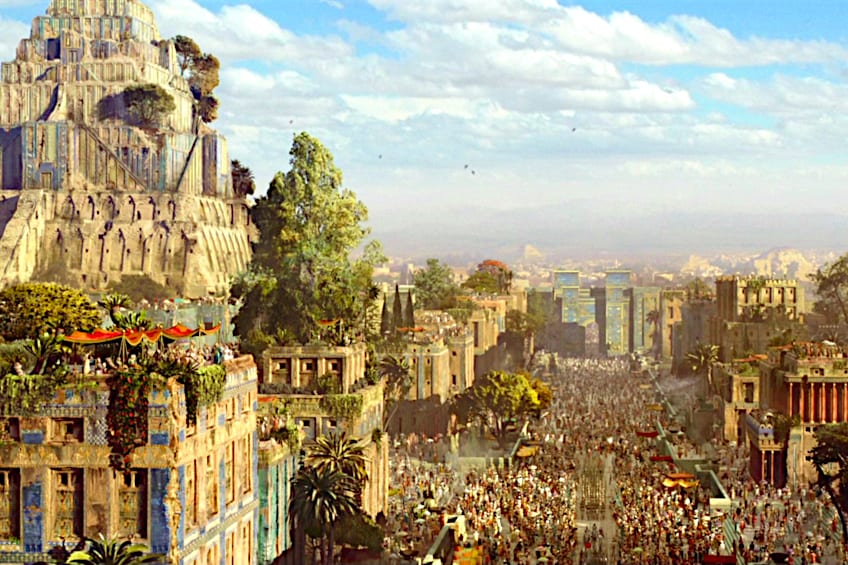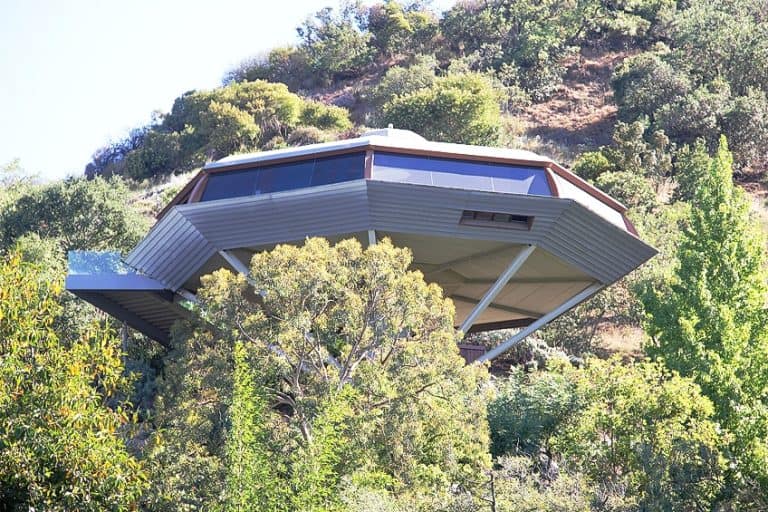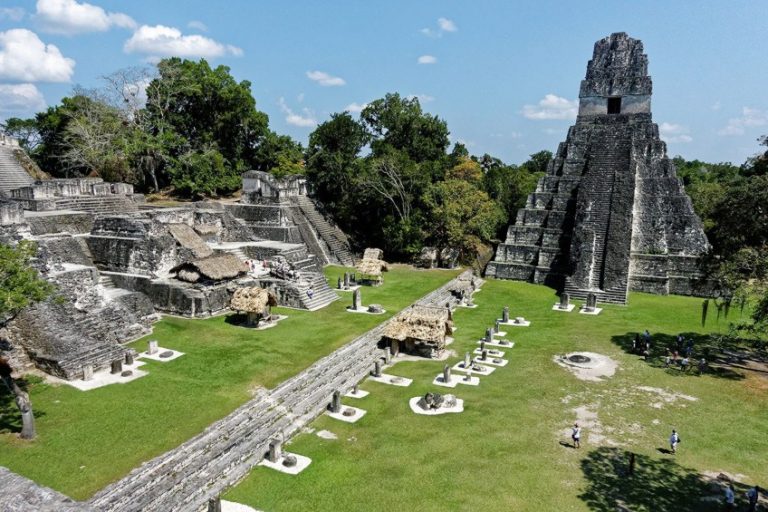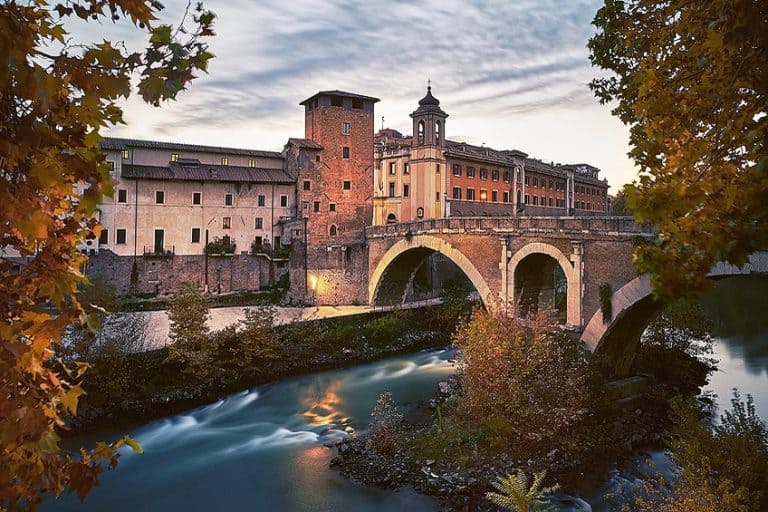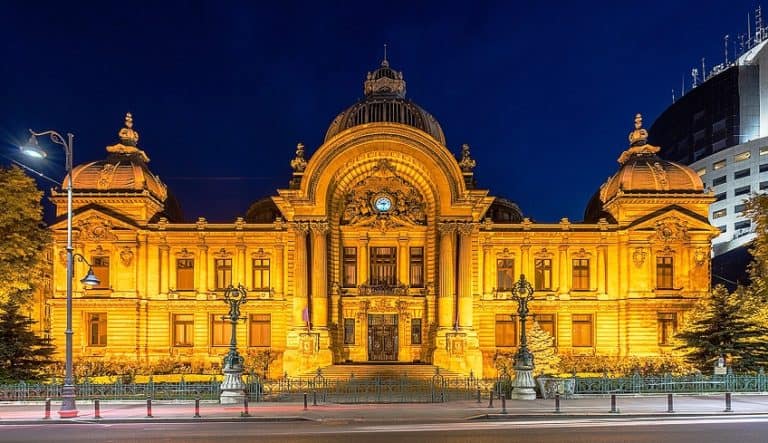Hanging Gardens of Babylon – A Wonder of Ancient Engineering
What are the Hanging Gardens of Babylon? Rated as one of the Seven Ancient Wonders of the World, Nebuchadnezzar’s Hanging Gardens of Babylon were defined as a spectacular achievement of engineering, consisting of an ascending succession of tiered garden areas comprising a wide range of flowers, vines, shrubs, and trees, essentially a big green hillside comprised of mud bricks. If you want to find out who made the Hanging Gardens of Babylon, then continue reading! We will be discussing the history, mystery, and controversy of this wonder, and discovering what happened to the Hanging Gardens of Babylon.
What Were the Hanging Gardens of Babylon?
| Architect | Nebuchadnezzar II (c. 605-562 BCE) |
| Date Completed | c. 6th century BCE |
| Function | Garden |
| Location | Hillah, Babil province, Iraq |
Who made the Hanging Gardens of Babylon? According to folklore, the Hanging Gardens of Babylon were built by Nebuchadnezzar II and were located next to his magnificent palace. He had built it for his Queen Amytis, who longed after the beautiful valleys of her own country. This was confirmed by Berossus, the Babylonian priest, who wrote about it around 290 BCE and provided an account that Josephus subsequently quoted. The mythological queen Semiramis is also credited with the construction of the Hanging Gardens of Babylon.
Nebuchadnezzar’s Hanging Gardens are the only of the Seven Ancient Wonders of the World whose location has yet to be determined. No existing Babylonian literature references the Hanging Gardens, and no archaeological findings have been unearthed in Babylon.
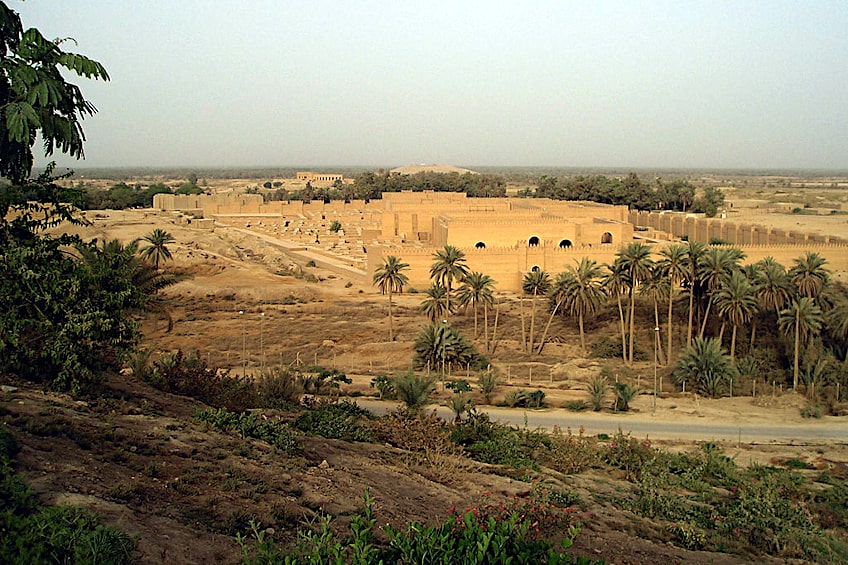
Some experts believe the gardens were located in Nineveh, the capital of the Assyrian Empire, rather than Babylon, while others believe the ancient texts were correct and that archaeology would offer definitive confirmation. Others say the Hanging Gardens of Babylon are nothing more than an illusion of the old consciousness.
Archaeology at Babylon and ancient Babylonian writings are mute on the subject, although ancient texts depict the gardens as if they were located in Nebuchadnezzar’s city and were still in use during Hellenistic times.
The Hanging Gardens of Babylon are the most compelling of the Seven Ancient Wonders of the World due to their exotic characteristics in comparison to the more famous Greek and Egyptian sites, as well as the uncertainty surrounding their whereabouts and disappearance.
Gardens in the Ancient Era
The majority of experts say that the notion of maintaining gardens for pleasure rather than food production began in the Fertile Crescent, where they were regarded as a utopian paradise. The idea extended across the ancient Mediterranean, and by the Hellenistic era, even private people, or at least the richer ones, were planting their own personal gardens in their residences. Gardens were not only about plants and flowers; structural, sculptural, and water elements were incorporated, and vistas were taken into account by the ancient landscapers.

Gardens were such a sought-after characteristic that fresco artists, like those at Pompeii, painted whole walls of villas with pictures that created the impression that entering a room also meant visiting a garden. All of these outdoor recreational areas trace their origin to ancient Mesopotamia, particularly the famous Hanging Gardens of Babylon. There were gardens erected after the Hanging Gardens of Babylon, such as those in the Zagros Mountains by Cyrus the Great.
Terraces to aid irrigation, towering walls to offer shade, trees crowded together to better keep crucial moisture and endure scorching winds, and, of course, positioned near an ample water supply were common features of such gardens.

Because gardens were widely connected with palaces in almost every civilization from ancient Mesoamerica to China, some experts assume that the gardens, if they existed, would have been nearby or in one of Nebuchadnezzar’s royal palaces on the sides of the Euphrates river.
Descriptions of the Hanging Gardens
The gardens were also known as the Gardens of Semiramis, after the divine Assyrian ruler who was considered by the Greeks to have significantly expanded Babylon around the 9th century BCE. A Greek historian from the 5th century BCE, Herodotus, recalls Babylon’s amazing irrigation system and fortifications but makes no mention of gardens.
The gardens were first mentioned in an ancient text by Berossus of Kos, who was actually a cleric named Bel-Usru who migrated to the Greek island. Berossus’ book, written around 290 BCE, exists primarily as quoted fragments in the works of later writers, although many of his depictions of Babylon have been confirmed by archaeology.
Berossus depicts towering stone terraces that resemble mountains and were planted with a variety of huge plants and flowers. Terraces would not only have provided a pleasing visual impact with the hanging plants, but they would also have made watering simpler. Exactly why were the Hanging Gardens of Babylon built, though? Berossus describes why the gardens were built: to make the king’s bride, a Mede named Amytis, feel less yearning for her green and mountainous country.
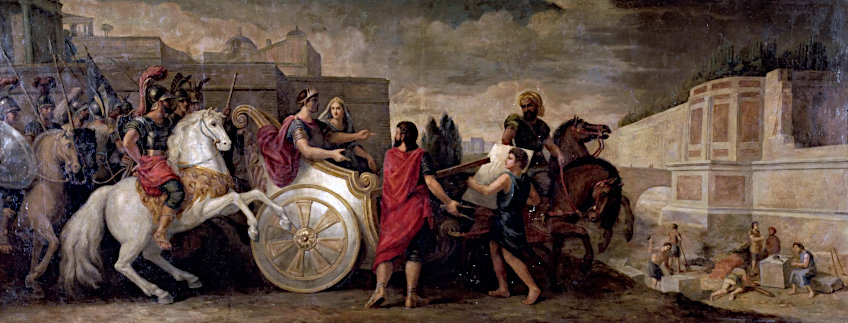
Berossus documented Nebuchadnezzar II’s reign and is the only account to attribute the Hanging Gardens to that king: “In this citadel, he built very high walls reinforced by stone pillars, and by cultivating what was known as a pensile utopia and refilling it with various trees, he gave the vista the appearance of a mountainous area. This he undertook to please his queen, who was raised in Media and preferred a hilly setting”. Unfortunately, there is no mention of a queen of that name in Babylonian documents.
There are several more significant scholars whose accounts of Babylon can still be found in some form today. These individuals were interested in the scale of the Hanging Gardens, its overall architecture and irrigation system, and why they were constructed.
Diodorus Siculus appears to have examined manuscripts by Cleitarchus and Ctesias of Cnidus from the 4th century BCE. Diodorus attributes the building to a Syrian ruler. He claims that the area was square in design, with each side being around four plethra long. The gardens were tiered, with the highest galleries being 50 cubits tall. The sides were 22 feet thick and built of brick. The terraced sections’ foundations were sufficiently deep to allow root development for the greatest trees, and the gardens were watered with water from the adjacent Euphrates. Quintus Curtius Rufus most likely utilized the same sources as Diodorus.

He claims that the terraces were built on top of a 20-stadia-circumference fortress. He attributed the gardens’ construction to a Syrian ruler, again because his bride missed her country. Strabo’s tale may have been based on the lost tale of Onesicritus from the 4th century BCE. He claims that the grounds were irrigated via an Archimedes screw that ran from the Euphrates River to the terraces.
The most recent of the ancient texts known to be cited independently of the other sources is Philon of Byzantium’s Handbook to the Seven Wonders of the World (225 BCE). Strabo’s method of elevating water by screw meets his description.
Philon lauds the engineering and inventiveness of creating massive regions of deep soil with enormous bulk, well beyond the inherent grade of the surrounding terrain, as well as irrigation methods. Philon claims that in the garden, “tree roots are planted on an upper terrace rather than in the earth, and plants are cultivated above ground level. Stone columns hold up the entire edifice. Water flows down sloping channels and emerges from high places. These fluids completely fill the garden, saturating plant roots and keeping the whole area moist. The outcome is that the grass is continually green and that the branches’ leaves grow firmly attached to flexible limbs. The fact that the gardening work is suspended above the spectators’ heads is what makes this item of royal luxury architecture so fascinating”.
Controversy Over the Existence of the Gardens
The mythical gardens is the only one of the Seven Ancient Wonders of the World whose location has yet to be determined. No existing Babylonian literature references the terraces, and no clear historical sources have been discovered in Babylon. The city of Babylonia, its fortifications, and the palace are described in great detail on tablets from Nebuchadnezzar’s reign, but the Hanging Gardens are not mentioned. A few scholars today argue that the Hanging Gardens of Babylon never even existed.
Three hypotheses have been proposed to explain this: first, that they were wholly mythological, and the explanations observed in ancient Roman and Greek writings expressed a romantic fantasy of an eastern-like garden; second, that they did exist in Babylon but had been torn down sometime during the 1st century CE; and third, that the myth makes reference to a well-documented garden constructed by the Assyrian King Sennacherib in his country’s capital on the River Tigris, Nineveh.

Historians argue that the Hanging Gardens of Babylon never existed because the troops in Alexander the Great’s army were awestruck by the vast affluence of the bustling metropolis of Babylon and tended to embellish their experiences significantly. When the troops returned to their country, they had wonderful things to tell about Mesopotamia’s beautiful gardens, palm palms, and majestic palaces. After all, this was the region of Nebuchadnezzar’s magnificent palace, the mythical Tower of Babel, the magnificent Ishtar Gate, and other pyramid-like monuments.
When all of these amazing architectural aspects were merged in the imaginations of Ancient Greek poets and historians, the outcome was just another, although mythical, World Wonder.
While no artifacts from the gardens have been discovered at Babylon, it is conceivable that evidence remains beneath the Euphrates that cannot be safely investigated. Some have also proposed that the gardens were given to Nebuchadnezzar for politically motivated purposes and that they existed elsewhere. Assyrian inscriptions depict Nineveh’s high “hanging” gardens, supporting the notion that the Babylonian gardens are exaggerated, fantastical reproductions of what existed in another important Mesopotamian metropolis.
The Nineveh Connection
Stephanie Dalley proposes that the gardens were really the well-documented terraces built for the Assyrian king Sennacherib’s palace at Nineveh. According to Dalley, the two sites were confused throughout the ages, and the enormous gardens of Sennacherib’s palace were credited to Babylon and Nebuchadnezzar.
Archeological digs have discovered remnants of a huge system of aqueducts assigned to Sennacherib by an epitaph on its remnants, which Dalley suggests were part of an 80-kilometer series of dams, canals, and aqueducts used to transport water to Nineveh and elevate it to the top tiers of the gardens.
Dalley’s arguments are based on recent advances in the understanding of contemporaneous Akkadian inscriptions, and her primary claims are as follows:
- Several Mesopotamian towns were given the name Babylon, which means “Gate of the Gods”. Sennacherib dubbed the gates of the city of Nineveh after deities, implying that he wanted his city to be known as “Babylon”.
- Only Josephus claims Nebuchadnezzar as the monarch who created the gardens. Although leaving several inscriptions, none at all describe any gardens or architectural achievements. A king from Syria is mentioned by both Quintus Curtius Rufus and Diodorus Siculus. Sennacherib, on the other hand, left a detailed summary and archaeological proof of his water engineering. On an intricately carved wall panel in his palace, his descendant Assurbanipal depicted the mature garden.
- Sennacherib referred to his magnificent residence and garden as “a marvel for all peoples“. He discusses the construction and use of screws to elevate water in his garden.
- The accounts of the ancient authors correspond closely to these modern records. Alexander the Great stayed for four days at the aqueduct at Jerwan before the Battle of Gaugamela in 331 BCE. The historians who accompanied him would have had plenty of opportunity to explore the massive works around them and document them in Greek. These first-hand stories have not survived to the present day, although they were cited by later Greek authors.
The garden of King Sennacherib was famed not just for its attractiveness – a year-round refuge of lush green amid a dusty summer environment – but also for the incredible marvels of water engineering that kept it running. There was a longstanding history of Assyrian royal garden construction. King Ashurnasirpal II had built a canal across the highlands. Orchards of fruit trees were established. Date trees, almond trees, rosewood, ebony, oak, olive, walnut, tamarisk, ash, terebinth, pear, pomegranate, fig, quince, and grapes were also listed. Assurbanipal’s sculptured wall panel depicts the garden at maturity. The British Museum owns one actual panel and a sketch of another, although neither is on exhibit.
Several characteristics highlighted by classical authors can be seen in these current images. He recalls Sennacherib’s palace and the gigantic limestone stones that fortify the flood defenses. Austin Henry Layard unearthed sections of the palace in the middle of the 19th century.
His fortress layout exhibits outlines that are comparable with Sennacherib’s garden, but its location is unknown. The region has recently been utilized as a military facility, making further investigation impossible. The watering of such a garden necessitated an increase in the city of Nineveh’s water supply.
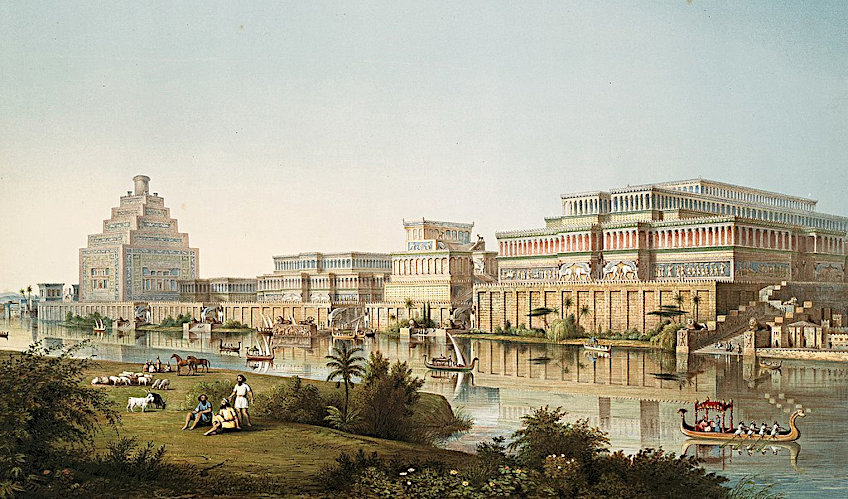
The canals extended 50 kilometers into the highlands. Sennacherib was pleased with his inventions and discusses them at length in his inscriptions. His plaque at the Bavian headwaters describes motorized sluice gates. Over two million prepared stones were used to build a huge aqueduct across the valley at Jerwan. Because the water came from farther up in the mountains, he was able to get it into his garden at a higher level, and he then lifted the water even further by installing his new water screws.
These hydraulic innovations allowed him to create a garden that loomed above the terrain, with huge trees on top of the terraces – a spectacular artistic impact that was even better than the work of his predecessors.
Nebuchadnezzar’s Hanging Gardens and the Seven Wonders of the Ancient World
Some of the ancient world’s monuments wowed people from all over with their grandeur, creative and structural ambition, and sheer enormity, earning them a position as must-see attractions for the historical explorer and travelers. When scribes such as Callimachus of Cyrene, Herodotus, Philo of Byzantium, and Antipater of Sidon produced nominations of the most amazing sites of the ancient world, seven such monuments constituted the initial “bucket list”. Many early lists of historical wonders included the gardens beside the great walls of Babylon, which were 7 kilometers long, 20 meters high in parts, 10 meters thick, and periodically interrupted by much larger towers, according to Strabo.
According to author P. Jordan, the gardens made the list because they “appealed to the purely sumptuous and lyrical perversity of endeavor”.

After the Rule of Nebuchadnezzar and Archeological Digs
After Nebuchadnezzar, Babylon remained an important city as part of the Seleucid and Achaemenid Empires, with the monarchs of both kingdoms frequently residing in Babylon’s palaces. The city was taken over in turn by the Parthians, Arsacids, and Sasanids, but it retained its geographical strategic importance, therefore it is very plausible that the gardens persisted for several hundred years after their creation. Systematic archaeological digs in ancient Babylon started in 1899, and while numerous old structures, such as the Ishtar Gate, have been discovered, no trace of the famous gardens has been uncovered.

A hopeful find of 14 vaulted chambers during excavations of Babylon’s South Palace proved to be little more than enormous storerooms after tablets were uncovered and read on the scene. Another series of digs, considerably closer to the river and parts of another of the king’s palaces, have discovered massive drains, walls, and what appears to be a reservoir, all required irrigation facilities for the gardens but no indication of the mythical lost marvel.
Despite the absence of physical and current literary evidence, it becomes impossible to think that the gardens did not exist at all, given that their mythology sparked extensive attention by ancient historians and they remained on the list of marvels for so long.
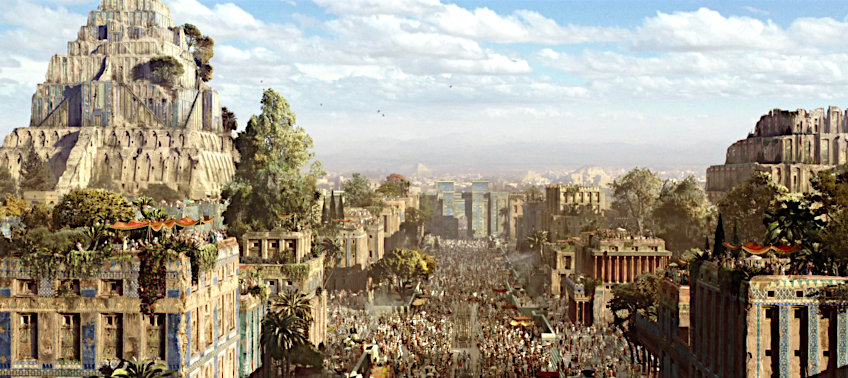
If the intriguing notion that the gardens were actually at Nineveh is dismissed, the likely solution, as always, appears to be somewhere in the center. The earliest lists of wonders were produced by Greek authors or those communicating with a Hellenistic audience, and what could have astonished a Greek used to arid terraced slopes of olive trees more than a verdant garden of exotica cleverly irrigated in Iraq’s unbelievably hot climate?
Maybe there was a garden of some kind in Babylon, and its magnitude was inflated in the same way that previous generations of Greek poets turned the mansion of Knossos on Crete into a mythological labyrinth.
Hopefully time will tell as archaeology undertakes its hard and tedious explorations into the past. If nothing else, the Hanging Gardens of Babylon are the ultimate illustration of why the Seven Ancient Wonders of the World concept was conceived in the first place – a shortlist of absolutely magnificent human endeavors that few would ever witness for themselves but that nonetheless sparked astonishment, discussion, and admiration.
Archeological Theories
Archaeologists are still looking for evidence to throw light on unanswered questions about the Hanging Gardens, which have yet to be fully resolved such as why were the Hanging Gardens of Babylon built, and what happened to the Hanging Gardens of Babylon. Recent excavations at Babylon have uncovered a large palace, a vaulted structure with high walls, and an agricultural well near the palace. Despite the fact that an archaeological team inspected the palace site and submitted a reproduction of the vaulted edifice as the original Hanging Gardens, Strabo’s reports situate the Hanging Gardens in a different location, closer to the Euphrates River.
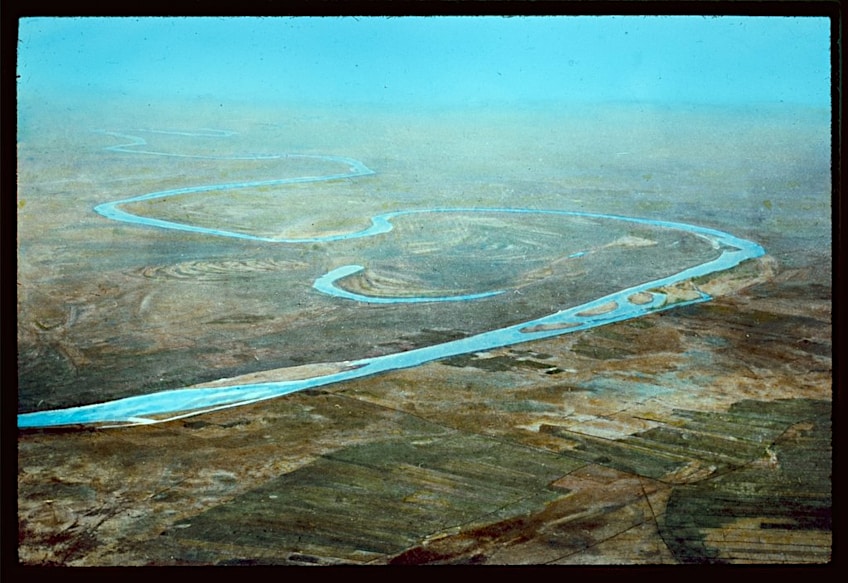
Other archaeologists argue that the vaulted building is too far away from the Euphrates to justify the initial assertions, even if Strabo was mistaken about the site. The later team rebuilt the palace site, locating the gardens in an area stretching from the palace to the river. Remarkably, a newly found, massive, 82-foot thick wall on the banks of the Euphrates may have been stepped to make terraces similar to those reported in ancient Greek literature. If they did exist, what happened to the Hanging Gardens of Babylon?
With no knowledge of the site, it’s impossible to say when or by whom the gardens were destroyed. Strabo’s old narrative, on the other hand, recounts gardens that were in ruins by the end of the 1st century BCE.
According to his chronicles, Alexander the Great intended to rebuild the Hanging Gardens but passed away before he could do it. “None of Alexander’s successors attended to this effort”, Strabo stated. The opportunity to locate the Hanging Gardens may have passed since then. Since the Euphrates River’s channel varied over thousands of years after Alexander, any remaining ruins may now be underwater.
The Rule of Nebuchadnezzar II in Babylon
Babylon, located approximately 80 kilometers south of present-day Baghdad in Iraq, was an ancient settlement with a habitation history reaching back to the 3rd millennium BCE. Under Amorite king Hammurabi, who reigned from 1792 to 1750 BCE, Babylon became a formidable military force.
By capturing neighboring city-states, Hammurabi established the Babylonian empire by unifying the majority of central and southern Mesopotamia under his rule. Hammurabi transformed Babylon into a prosperous, powerful, and important metropolis.
He created one of the earliest and most complete written legal codes ever. It was referred to as the Hammurabi Code, and it assisted Babylon in displacing other nearby communities. But Babylonia didn’t last long. Following Hammurabi’s demise, the empire fell apart and briefly became a lesser empire. The Neo-Babylonian Empire was formed by a new line of rulers and lasted from 626 to 539 BCE. After conquering the Assyrians at Nineveh in 612 BCE, the Neo-Babylonian Kingdom emerged as the most formidable empire in the world. The Neo-Babylonian Empire had a cultural revival in the Near East.
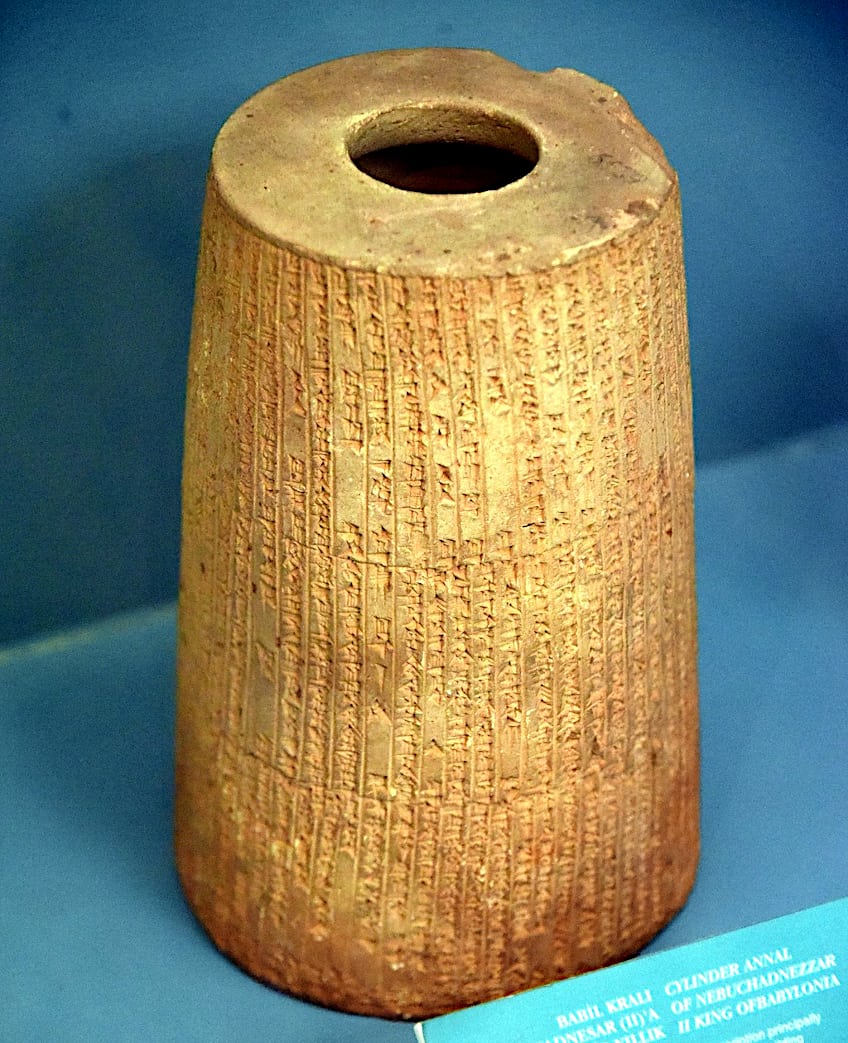
The Babylonians built several stunning and opulent palaces during the rule of King Nebuchadnezzar II and preserved artwork and monuments from the former Babylonian Empire. The city experienced its apex in the 6th century BCE, during Nebuchadnezzar II’s reign when it served as the capital of the Neo-Babylonian Empire.
After his conquests of the Assyrian Empire, Nabopolassar, Nebuchadnezzar’s father, established the empire. Nebuchadnezzar II would proceed to accomplish far more, including the conquest of Jerusalem in 597 BCE. The Babylonian monarch then set about transforming his city into one of the most magnificent cities anywhere in the world. Like the earlier Babylonian Empire, the Neo-Babylonian Empire. The mythical Persian ruler Cyrus the Great captured Babylon in 539 BCE, little than a hundred years after its establishment. The total collapse of Babylon came.
The Hanging Gardens of Babylon are ancient gardens that are regarded as one of the Seven Ancient Wonders of the World and are said to have been situated near Babylon’s royal palace. The location of the Hanging Gardens had not been definitively confirmed at the start of the 21st century. Despite this, numerous hypotheses about the gardens’ construction and location remained. Some scientists hypothesized that they were actually rooftop gardens. Another theory held that the gardens were constructed inside the walls of the royal palace in Babylon and that they did not “hang,” but rather were “suspended in the air”, in other words, they were gardens on roofs laid out on a succession of ziggurat verandas that were watered by pipes from the Euphrates River.
Frequently Asked Questions
What Are the Hanging Gardens of Babylon and Why Were the Hanging Gardens of Babylon Built?
According to mythology, King Nebuchadnezzar II erected the gardens in the 6th century BCE for his bride, Amytis. The Persian princess craved the forested hills of her youth, so Nebuchadnezzar constructed her a paradise in the desert, a structure filled with exotic plants and trees and tiered to imitate a mountain. Her sweltering, flat, and dusty new home in Babylon must have appeared absolutely dreary in comparison to her homeland. The only issue is that historians are unsure if the Hanging Gardens actually existed.
Who Made the Hanging Gardens of Babylon?
The most well-known narrative of the Hanging Gardens concerns the legendary King Nebuchadnezzar and queen Amytis, who moved from the country of Media, which is roughly equivalent to modern-day Kurdistan. Because Babylon was often dry, the queen was said to lament her homeland’s gardens and vegetation. According to a new idea, the gardens were not situated in Babylon, but rather in Ninevah, the northern Assyrian city, and were created by King Sennacherib. The mistake might have been prompted by the fact that Ninevah was once known as New Babylon. Regrettably, the ancient remnants of Ninevah are positioned in a disputed and hence hazardous portion of Iraq, making excavations unfeasible for the time being. Perhaps one day we shall learn the truth about Nebuchadnezzar’s Hanging Gardens.
Do We Know What Happened to the Hanging Gardens of Babylon?
The legitimacy of the Hanging Gardens is still hotly debated. In some ways, the Hanging Gardens appear fantastic, almost too real to be true. Despite this, archaeologists have discovered and verified the existence of several additional seemingly-unreal structures in Babylon. However, the gardens remain hidden. Some experts claim that remnants of the old building have been discovered amid Babylon’s ruins. The issue is that these ruins are not near the Euphrates River, as some accounts claim. Furthermore, the Hanging Gardens are not mentioned in any contemporary Babylonian sources. Some think that the Hanging Gardens were a fable, recounted only by Greek writers after Babylon’s collapse.
What Did Nebuchadnezzar’s Hanging Gardens Look Like?
It may appear shocking how very little we understand about Babylon’s Hanging Gardens. It is believed to have been built near the Euphrates River for easy water access although no archeological proof has been discovered to verify its specific position. It is the only one of the Seven Ancient Wonders of the World whose whereabouts has yet to be discovered. The Hanging Gardens are thought to have been a towering edifice erected on stone (very unusual for the region) that resembled a mountain in some fashion, maybe by having numerous terraces. Numerous diverse trees and plants were situated on top of and draped over the walls. It takes a lot of water to keep these exotic plants alive in the desert. According to legend, an engine pushed water up through the structure from a well lying below or straight from the river.
Justin van Huyssteen is a freelance writer, novelist, and academic originally from Cape Town, South Africa. At present, he has a bachelor’s degree in English and literary theory and an honor’s degree in literary theory. He is currently working towards his master’s degree in literary theory with a focus on animal studies, critical theory, and semiotics within literature. As a novelist and freelancer, he often writes under the pen name L.C. Lupus.
Justin’s preferred literary movements include modern and postmodern literature with literary fiction and genre fiction like sci-fi, post-apocalyptic, and horror being of particular interest. His academia extends to his interest in prose and narratology. He enjoys analyzing a variety of mediums through a literary lens, such as graphic novels, film, and video games.
Justin is working for artincontext.org as an author and content writer since 2022. He is responsible for all blog posts about architecture, literature and poetry.
Learn more about Justin van Huyssteen and the Art in Context Team.
Cite this Article
Justin, van Huyssteen, “Hanging Gardens of Babylon – A Wonder of Ancient Engineering.” Art in Context. May 23, 2023. URL: https://artincontext.org/hanging-gardens-of-babylon/
van Huyssteen, J. (2023, 23 May). Hanging Gardens of Babylon – A Wonder of Ancient Engineering. Art in Context. https://artincontext.org/hanging-gardens-of-babylon/
van Huyssteen, Justin. “Hanging Gardens of Babylon – A Wonder of Ancient Engineering.” Art in Context, May 23, 2023. https://artincontext.org/hanging-gardens-of-babylon/.


